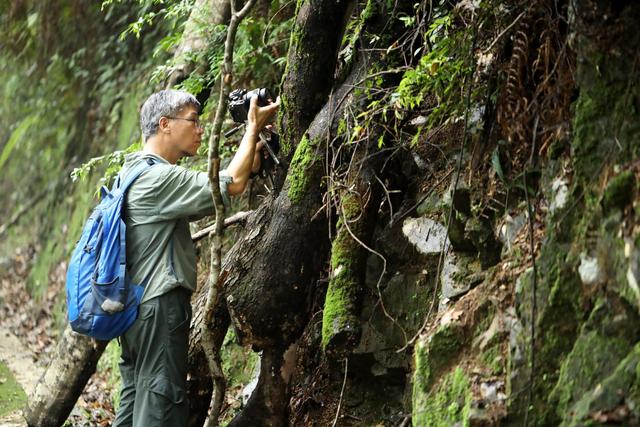Local bryologist receives international award
Writer: Wang Jingli | Editor: Holly Wang | From: Shenzhen Daily | Updated: 2021-07-15

Bryologist Zhang Li takes photos of bryophytes in Chebaling National Nature Reserve in Shaoguan, Guangdong Province, in May. Courtesy of Zhang Li
Zhang Li, a bryologist from Shenzhen Fairy Lake Botanical Garden in Luohu District, won the Grolle Award 2021 for his contributions to bryodiversity research at this year’s International Association of Bryologists (IAB) meeting held in Canada on Friday.
Bryology is the study of ancient plants that grow in moist and humid environments such as moss. As of now, a total of seven bryologists around the globe have received the honor. Zhang is said to be the second Chinese recipient of the award.
“I am very honored to receive the award. This is unexpected as I didn’t even know how many competitors I had. The award is a recognition of our research efforts over the past decade,” Zhang said in an interview yesterday.
Since he joined Shenzhen Fairy Lake Botanical Garden in 2006, Zhang and his team have by far collected 21,000 bryophyte samples, mainly from South and Southwest China, Southeast Asia, Australia, East Africa, Chile and Spain.
In 2012, Zhang and his team spotted a rare bryophyte species they had never seen before on a mountain over 4,000 meters high in Yadong County in Tibet.
Zhang brought the species back to Shenzhen for further research. The species was later confirmed as Brachymeniopsis gymnostoma, once listed as an extinct plant and was first discovered in Yunnan Province by an Austrian botanist more than 100 years ago.
“Though bryophytes are not directly related to our life, it plays a role in our ecosystem. It can slow down global warming as it can absorb carbon dioxide. A few bryophytes are of medical values, showing certain results in treating cardiovascular diseases,” suggested Zhang.
More bryophytes have been gradually used in horticulture in the last 10 years, presenting a new economic opportunity, according to Zhang.
Last year, Zhang was appointed an adviser for a bryophyte plantation in Maoyang Village in Jingning County, Zhejiang Province. Maoyang Village, with humid weather and ample rainfalls, is suitable to grow bryophytes.
Meanwhile, Zhang’s introductory book on bryophytes called “Miniature Angels in the Plant Kingdom” has been recommended by experts from Finland, the U.S., Australia and Poland.
The smallest and possibly most ancient terrestrial plants, bryophytes are small flowerless green plants of the division Bryophyta, which comprise mosses, liverworts and hornworts. Mosses are the most common and abundant bryophytes. Globally there are around 11,000 moss species, 7,000 liverworts and 220 hornworts.
Though small, these plants have a very big and important role in the ecosystem: absorption, which helps stabilize the soil surface, reducing erosion and water evaporation.
Bryophytes are also of great economic importance. Mosses are good source of animal food in rocky and snow-clad areas. The peat moss genus Sphagnum is an economically important bryophyte. The harvesting, processing and sale of Sphagnum peat is a multimillion-dollar industry.